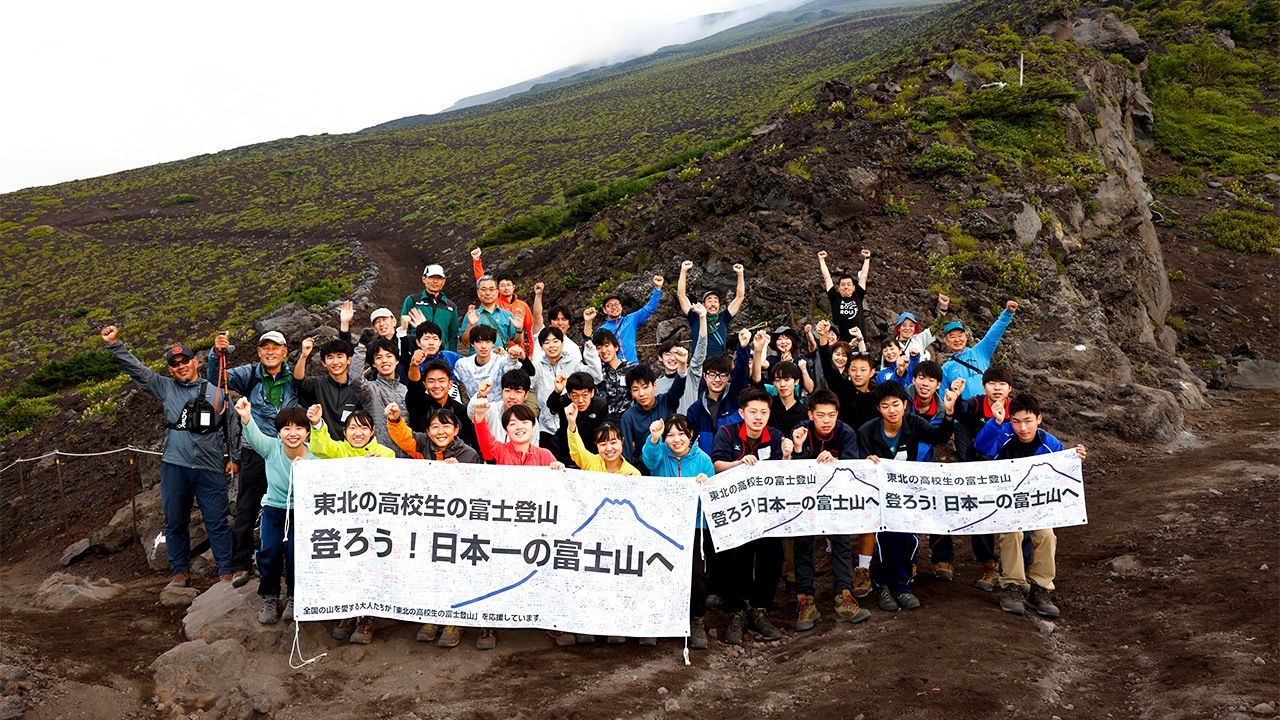
Tōhoku High Schoolers Climb Mount Fuji in Pursuit of Tabei Junko’s Last Wishes
Disaster Sports Society Opinion 3/11- English
- 日本語
- 简体字
- 繁體字
- Français
- Español
- العربية
- Русский
Words of Encouragement from the Former Emperor and Empress
Every early summer, Tabei Shin’ya receives a phone call from a staff member of the Imperial Household Agency. The purpose of the call is to convey words of encouragement from Emperor Emeritus Akihito Empress Emerita Michiko, providing ongoing moral support for the Junko Tabei Fund’s project to enable students from the Tōhoku region to climb Mount Fuji.
“We understand that the students will shortly head off on this year’s climb. Take care and good luck!”
In 1975, Tabei Junko was the subleader of the Japanese Women’s Everest Expedition and the leader of its climbing party. She succeeded in becoming the first woman in the world to reach the highest point on the globe. Then, in 1992, she became the first woman to climb the Seven Summits, the highest mountains on each of the continents. She passed away on October 20, 2016, having summited the highest peaks of 76 countries in all.
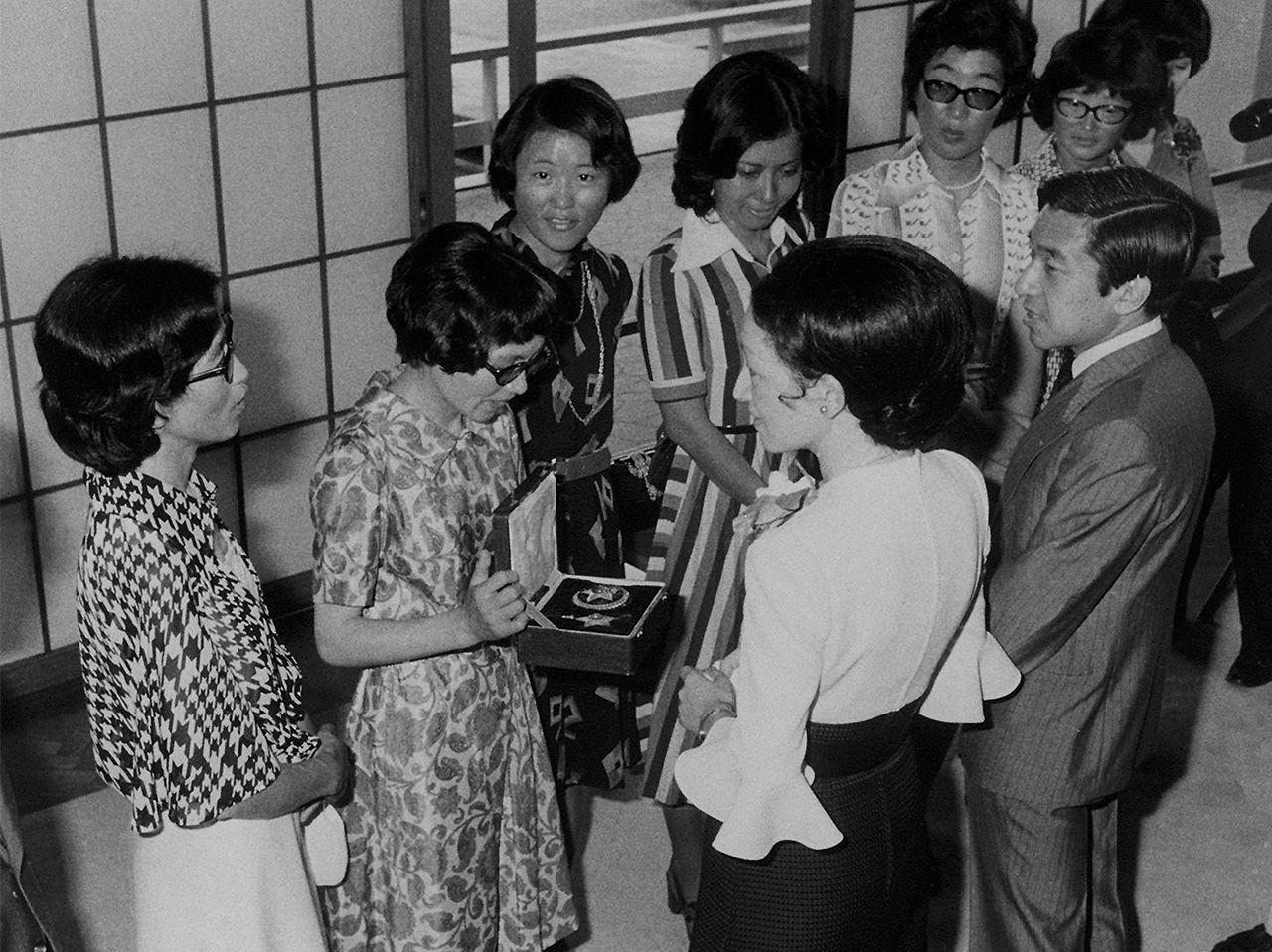
Tabei Junko (second from left) meets on June 20, 1975, with Akihito and Michiko, then crown prince and princess, at the Akasaka Imperial Residence in Tokyo after becoming the first woman to reach the summit of Mt. Everest. (© Jiji)
In summer 2012, a year after the devastating 2011 earthquake, Tabei began escorting high school students from Tōhoku on a climb of Mount Fuji. Immediately after the quake, she was engaged in recovery efforts for her hometown of Miharu in Fukushima Prefecture and the wider region. She then struck upon the idea of a project specifically in support of the younger generation, whom she knew would bear the burden of ongoing recovery, and she began fundraising to take high school students from the three devastated prefectures of Iwate, Miyagi, and Fukushima to climb Mount Fuji.

Tabei Junko celebrates in 2013 with high schoolers at Mount Fuji’s summit. (Courtesy of the Junko Tabei Fund)
After Junko passed away, her eldest son Shin’ya took over the project, and has now escorted around 800 participants over 12 climbs. An experienced adult climber is assigned to accompany two students, a practice that has allowed all participants to date to safely complete the climb and descent. The 26 participants in July 2023 again successfully completed the climb.
Continued Support for Tōhoku
At the time of the Great East Japan Earthquake, Emperor Akihito was still on the throne, and, together with Empress Michiko went to great lengths to show support for the victims. They visited the affected region for the seven weeks immediately following the quake, and were often seen sitting on the floor consoling survivors at evacuation centers.
Since Akihito’s abdication in 2019, the couple have remained committed to the Tōhoku reconstruction efforts, and, unknown to many, have continued their support of the high schooler project. Since Junko’s death, the couple’s words of encouragement for the students and project have been conveyed to her son Shin’ya.
In March 2017, Emperor Akihito and Empress Michiko attended a retrospective exhibition on Tabei Junko’s life held in Akishima, Tokyo, guided by Shin’ya. After viewing the exhibition, they took the time to meet with him, his father Masanobu, and his older sister Noriko, sharing memories of Junko and inquiring about the Tōhoku students’ Mount Fuji climbs.
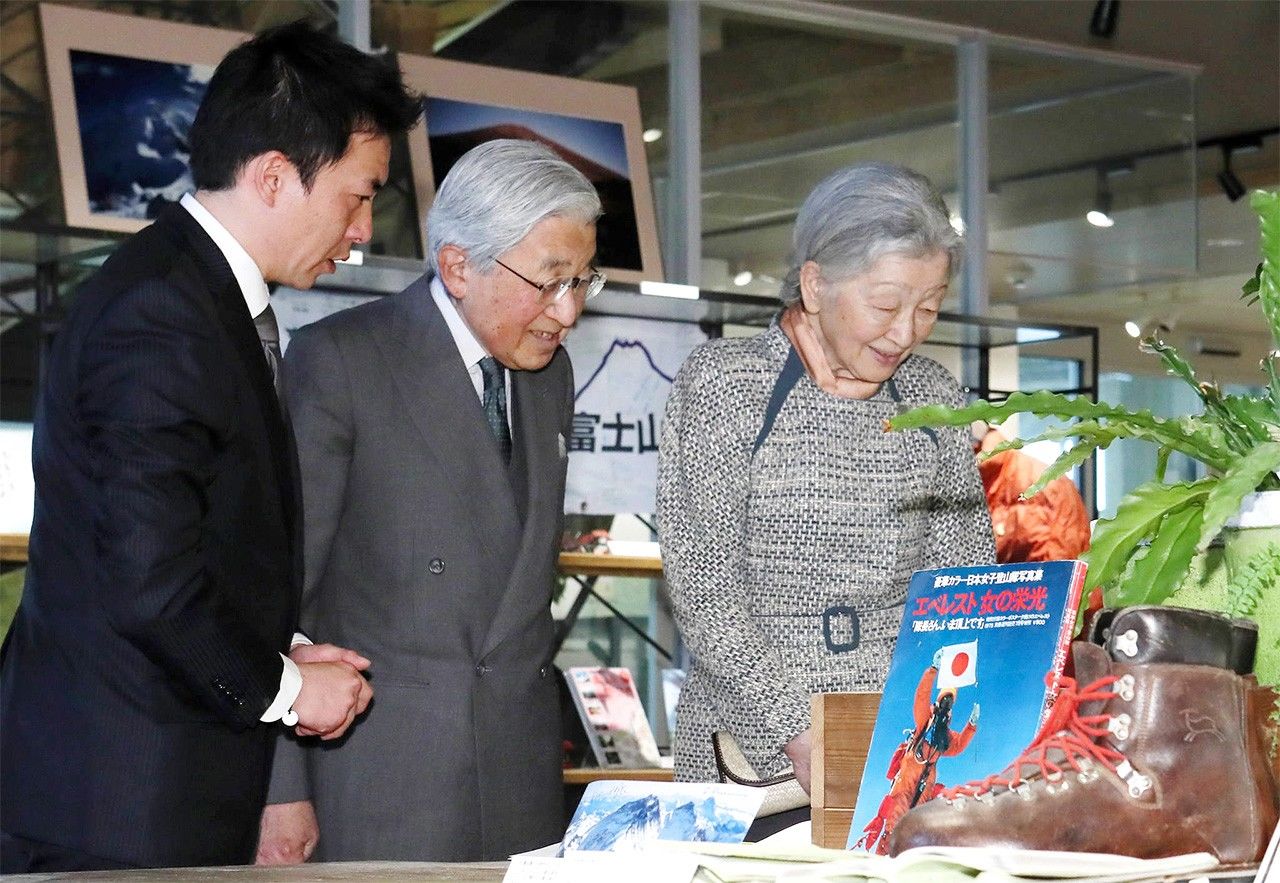
The imperial couple view the retrospective exhibition on Tabei Junko’s life, guided by her son Shin’ya, on March 29, 2017, in Akishima, Tokyo. (© Jiji)
A few days later, Shin’ya received a call from the emperor’s aide, the grand chamberlain, requesting that he visit. With his reputation as a naughty child growing up, which had been a cause of his mother’s despair, Shin’ya believed he had been summoned for a reprimand over the tone of his conduct with the imperial couple.
He was nervous the day he visited the Imperial Palace, but was put at ease when the grand chamberlain greeted him with a smile. “The empress wishes that you have this,” he said, handing Shin’ya a book of waka poetry on the theme of mountains, composed by Empress Michiko.
Sending Students’ Reflections to the Palace
This sparked the realization for Shin’ya that he had inherited his mother’s mission, and inspired him to send the report of the previous year’s Mount Fuji climb to the Imperial Palace.
He included a personal letter with the report thanking the empress for her book of poems and inviting her to read the reflections on the Mount Fuji climb penned by the students.
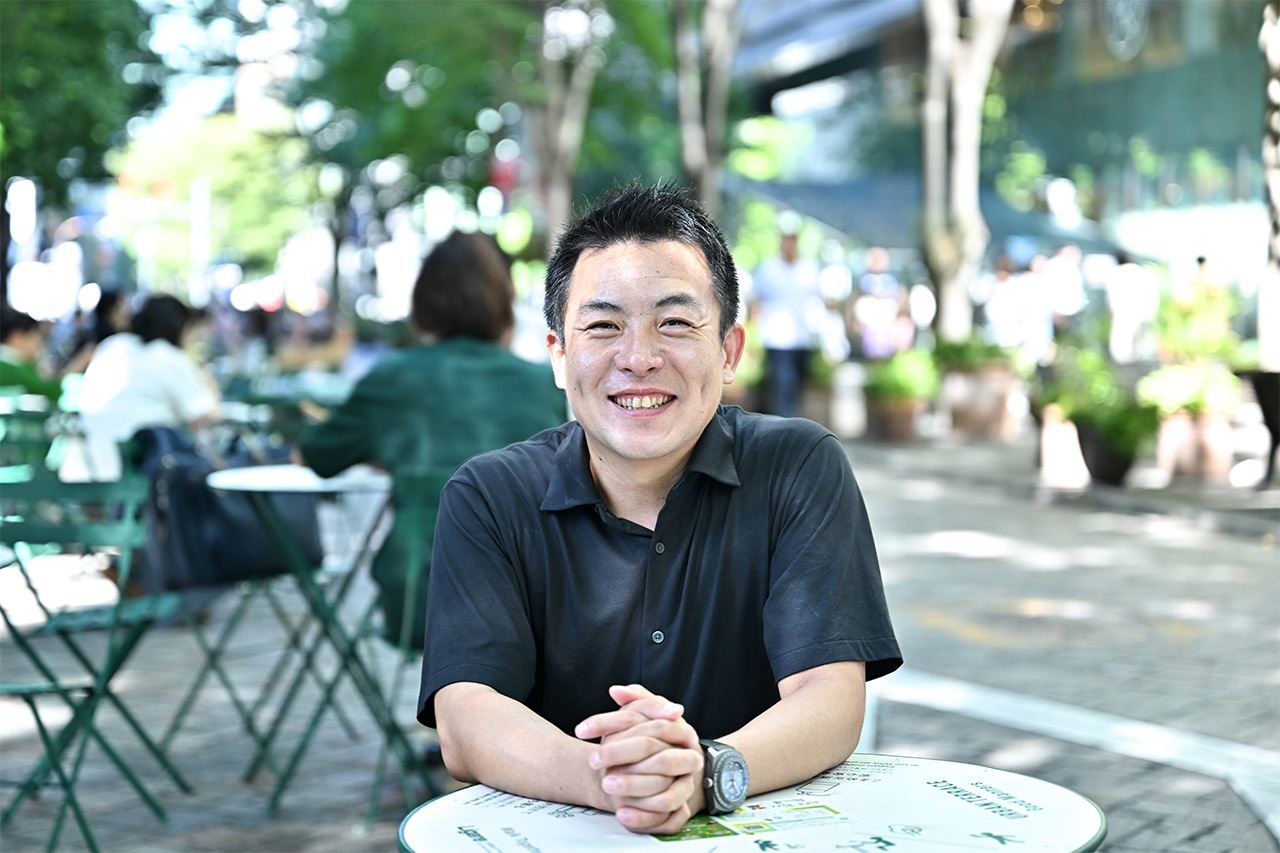
Tabei Shin’ya is always engaged in fund raising: “Next year’s climb has already begun.” (© Ikazaki Shinobu)
As a part of the project, students who make the climb are asked to write their impressions afterward, and these are collected and published in one volume, which is distributed to donor companies and individuals. The handwritten manuscripts of each student are published in order to convey their authentic selves.
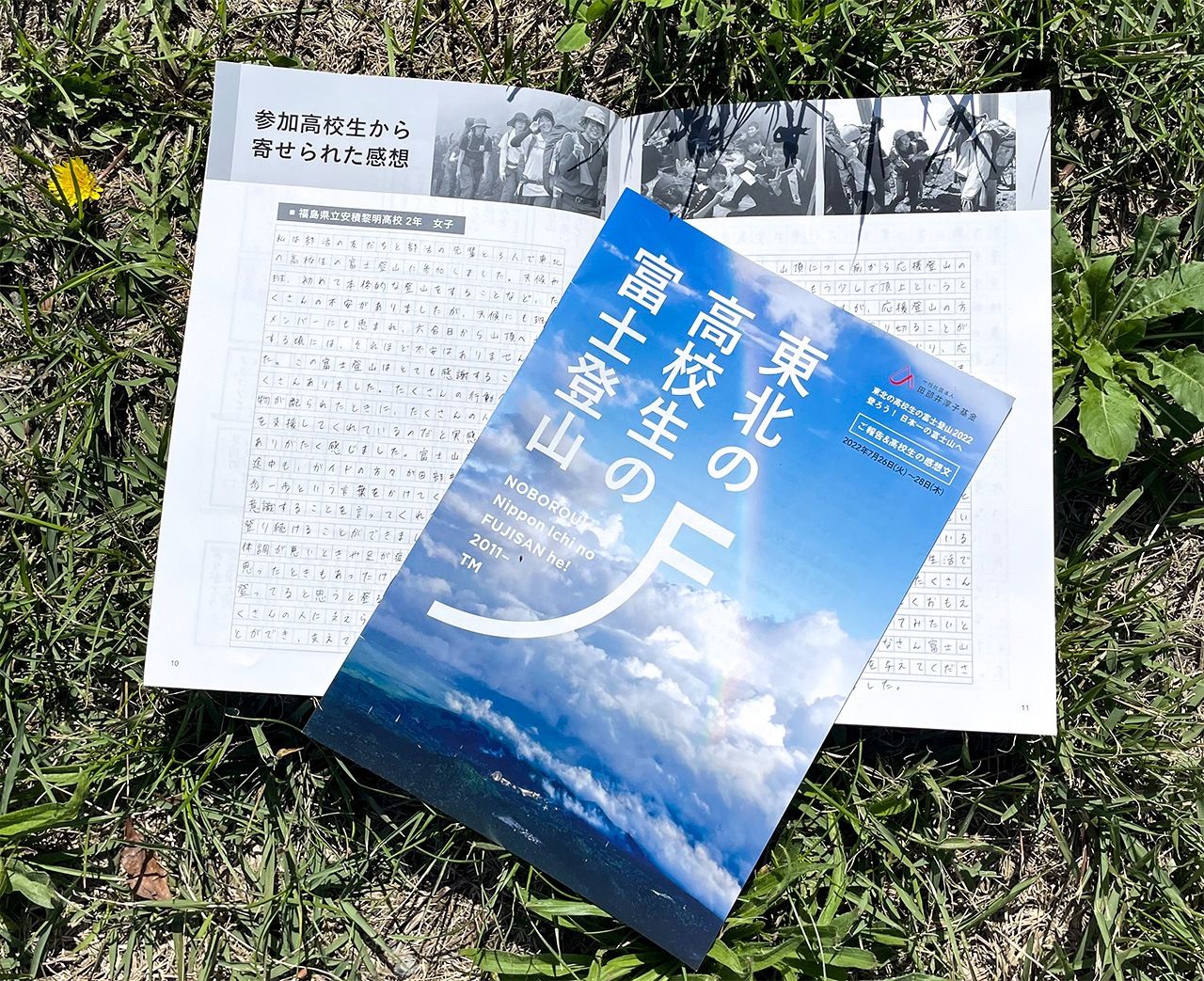
The reflections of the students who make the climb are collected into a single volume and sent to donor companies and individuals. (Photo courtesy of Junko Tabei Fund)
“We don’t correct the students’ writing, even if there are errors, because even that is a true reflection of who they are.”
Shin’ya does not know what became of the report he sent to the Imperial Palace, but ever since, he has received words of encouragement from the couple in the lead-up to the climbing season. Invariably, a staff member from the Imperial Household Agency also contacts him requesting that he forward the report afterward, and telling him that the imperial couple look forward to receiving it.
Shin’ya explains that he is truly grateful for the support he receives from them. “I don’t tell the students beforehand that their reflections will be read by the former emperor and empress, because I want them to express themselves naturally. We just collect their writings as usual, publish the report, and forward it.”
He says that they inform the students immediately after sending the report to the palace. “I’m sure the students are very surprised, but also encouraged.”
Shin’ya shows us the summer 2022 report. It includes a piece written by a female high school junior from Miyagi Prefecture describing her initial misgivings about the climb due to the poor weather and her joy at successfully completing the ascent and descent. “Having managed to climb to the top of Mount Fuji and down again, I feel that even I could achieve something in the future.”
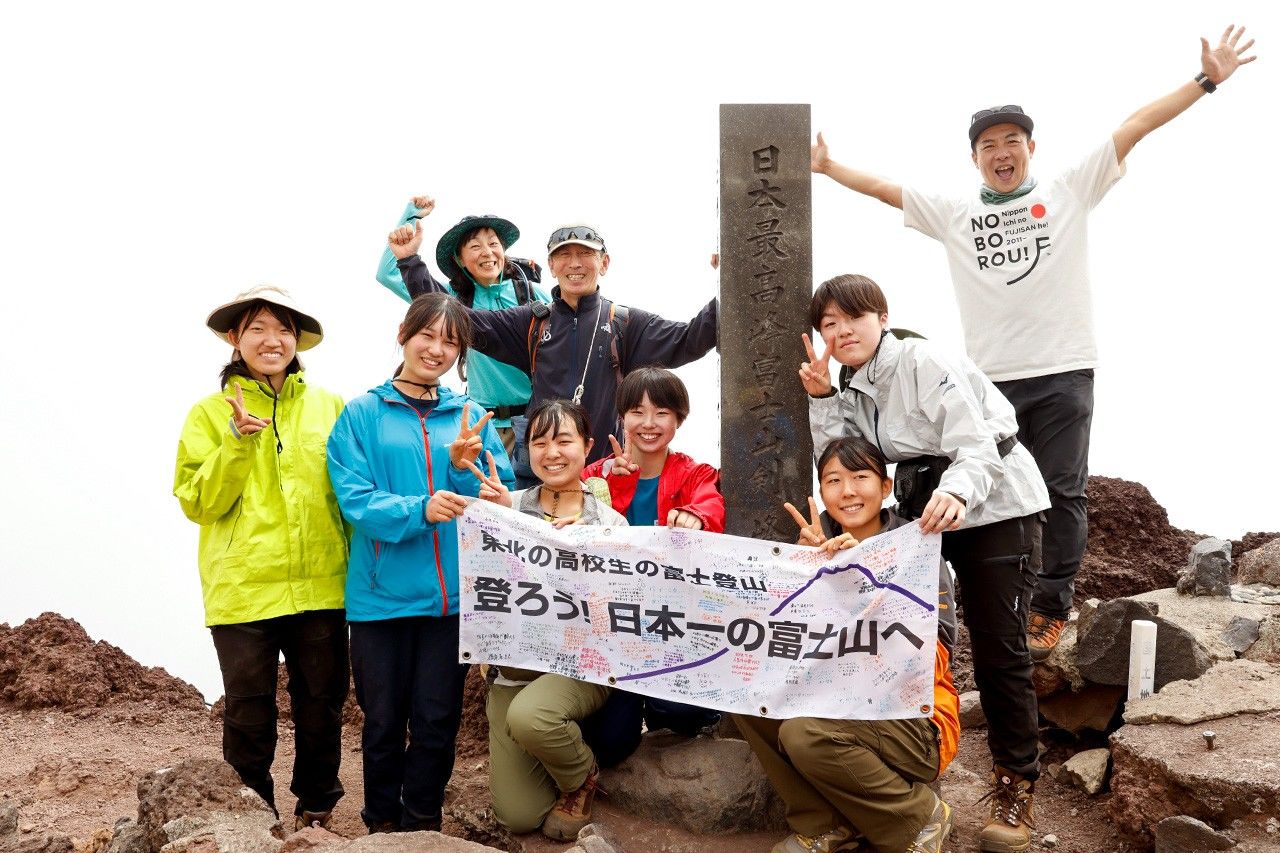
The students pose for a photo at the summit of Mouth Fuji. (Courtesy of the Junko Tabei Fund)
A male junior from Miyagi Prefecture wrote his meditations on the climb. On the ascent, he encountered a number of students affected by altitude sickness, but he was impressed with their determination to reach the top with the support of those around them, “We all gave them our encouragement.” He noted that he also later developed altitude sickness, but that he kept going, buoyed by thinking how the other students had continued their climb. Upon reflection, he realized that “People’s attitudes can have a big impact on those around them.”
Why the Participation Fee?
When Shin’ya first meets with the students taking part in the Mount Fuji climb, as project leader, there is one thing he always tells them: “You have to be strong, precisely because you are disaster victims.” Consequently, the students are charged a symbolic ¥3,000 participation fee.
When Junko began the project, she intended it to be free for students, but Shin’ya believes that is not in the best interests of the survivors. He speaks from his personal experience, having suffered the quake first-hand in Inawashiro, Fukushima.
“The aim of the project is to help the victims to overcome difficulties and to reflect by climbing Mount Fuji. I realized that it’s meaningless unless the students take responsibility and join the climb through their own volition.” He based the ¥3,000 figure on the average monthly allowance of high school students of ¥5,000, assessing their motivation as part of the participant screening system.
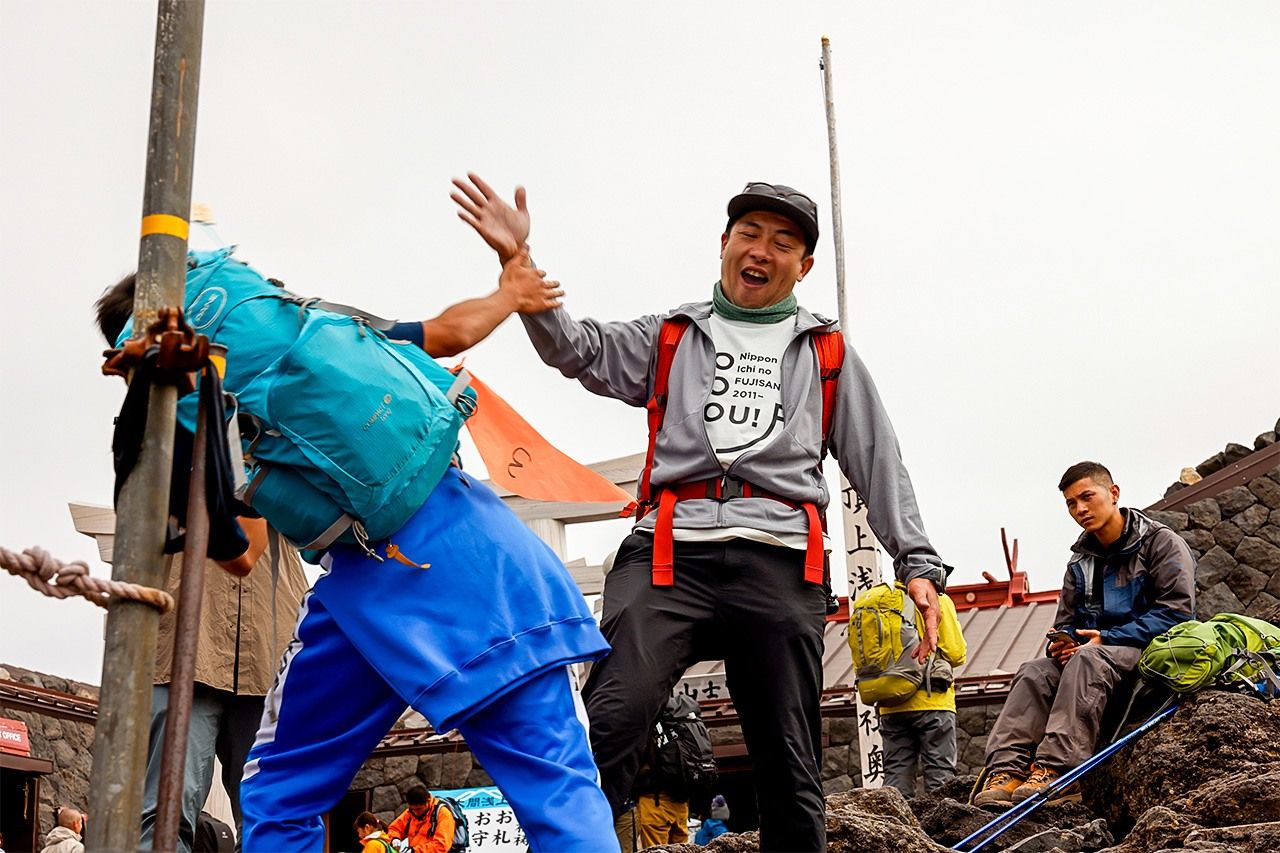
Shin’ya and one of the students “high five” upon reaching the summit. (Courtesy of the Junko Tabei Fund)
“Children who grow up in the disaster-affected areas suffer a great deal compared with children their age raised elsewhere. But that’s the reason they have to become stronger.”
Shin’ya acknowledges that it is tough, but he asks them to unite in order to overcome their hardships. He feels that this is a key message of the project.
There is a story he likes to share with reporters who ask about the climb’s significance. On his first climb, there was a male student who at first glance looked like he might cause trouble. Throughout the climb, he kept complaining of exhaustion. Shin’ya chided him, “Go home then. You were the one who applied to come!” Somehow, the boy made it to the summit, where he immediately took out his phone and started snapping photos.
Later, Shin’ya received a letter from the boy’s mother, telling him it was the first time her son had ever messaged her. The phone had belonged to his father, who died in one of the tsunami triggered by the quake.
Justifying the Project for the Postdisaster Generation
Meanwhile, each year, the project faces new hurdles.
With the cost of the transport from Tōhoku, accommodation on Mount Fuji, and payment for the support crew of mountaineers, the actual cost can add up to ¥90,000 per student. The majority comes from corporate and individual donations, but with rising fuel and commodity prices, the cost is increasing each year.
Also, in a few years, the generation born after the disaster will reach high school age. Shin’ya is unsure whether the project will remain justifiable thereafter.
“We’ll have to decide based on the inclinations of our donors. My mother hoped we could take a thousand students to the top, but I don’t think it’s about numbers. If necessary, I think it’s significant to even take just one or two students.”
Each year, he hears of graduates striving to succeed in wider society. Last year, they received a donation from a former student who took part in the first climb, 11 years ago, with the words, “Now it’s my time to give support.”
There is no doubt that the project has bolstered children who grew up in the affected areas. With a smile, Shin’ya expresses his hope that the project can continue, even if it takes on a different form.
As the memory of the disaster fades, Tabei Shin’ya continues searching for ways to preserve his mother’s legacy for the sake of Tōhoku students.
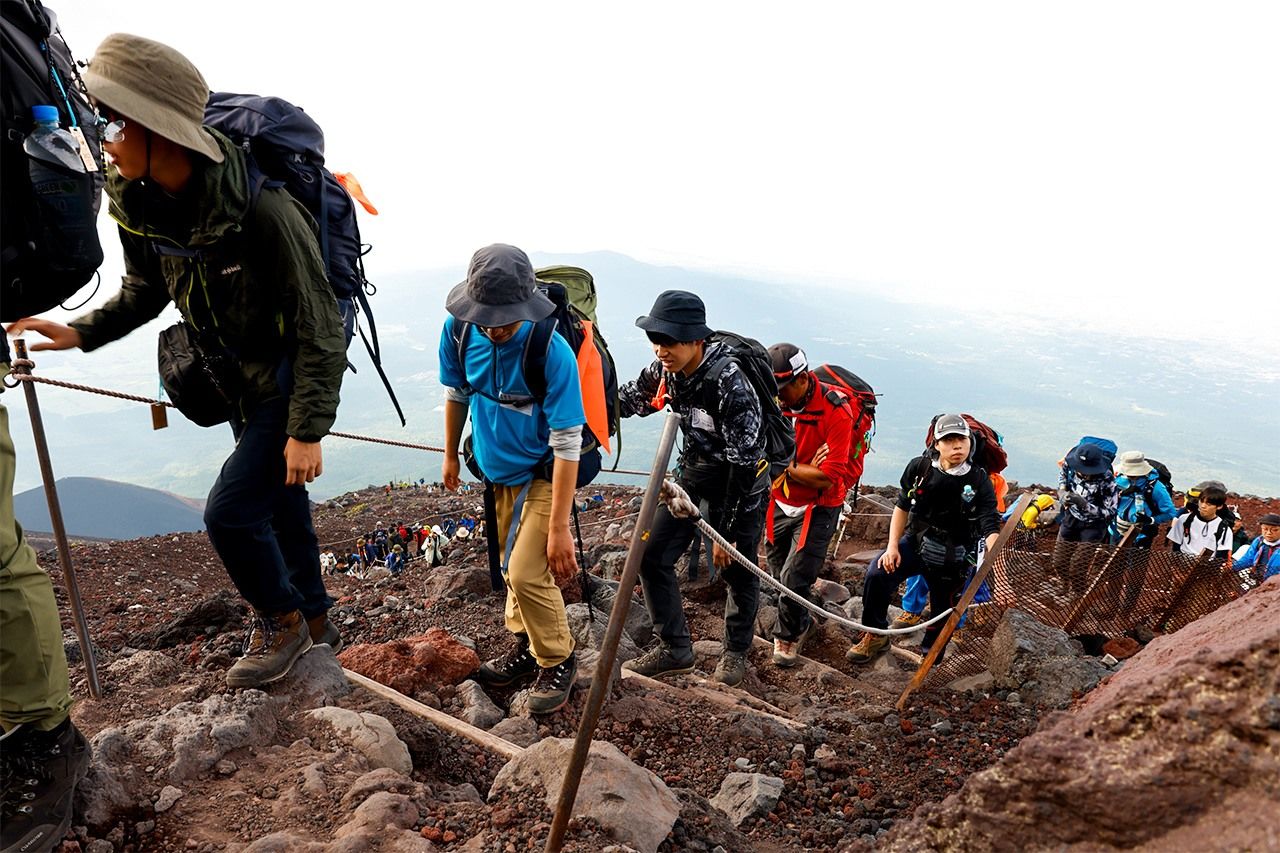
“Slowly, one step at a time.” High school students follow in the footsteps of the late Tabei Junko, learning from her life’s teachings. (Courtesy of the Junko Tabei Fund)
(Originally published in Japanese. Reporting and text: Hamada Nami, Power News Editorial Division. Banner photo: Participants in the 2023 Mount Fuji climb. Courtesy of the Junko Tabei Fund.)
Mount Fuji Great East Japan Earthquake mountaineering 3/11 Tabei Junko